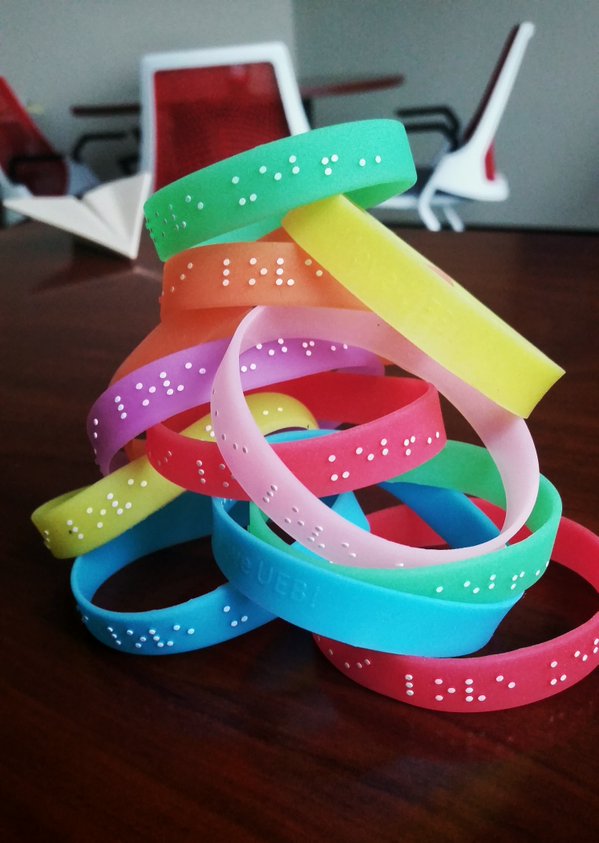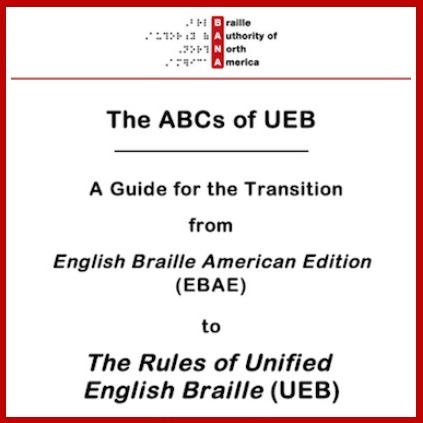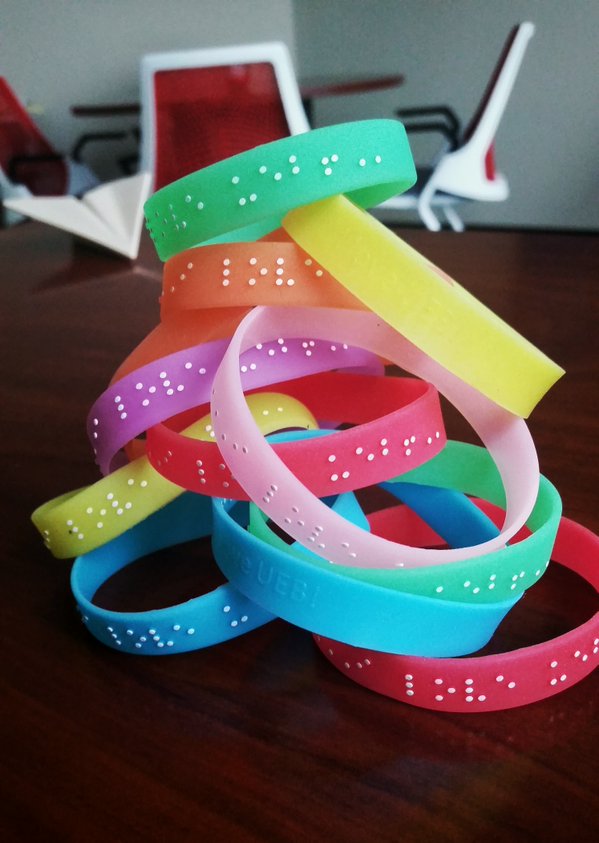 January 4, 2016 was the official implementation date for Unified English Braille (UEB) in the United States, replacing English Braille American Edition (EBAE) at that time. This date was selected because it is also the birthday of Louis Braille and World Braille Day. This page offers links to various resources about the changes in the braille code, including tools for learning more, tips for remembering the changes, and lessons to help braille students make the transition to UEB.
January 4, 2016 was the official implementation date for Unified English Braille (UEB) in the United States, replacing English Braille American Edition (EBAE) at that time. This date was selected because it is also the birthday of Louis Braille and World Braille Day. This page offers links to various resources about the changes in the braille code, including tools for learning more, tips for remembering the changes, and lessons to help braille students make the transition to UEB.
- What is UEB?
- How is the transition occurring?
- Rules and Guidelines for UEB
- Overview of the rules and changes in UEB
- Charts, Cheat Sheets and Tools for Remembering Changes in UEB
- Resources for Learning UEB
- Online Classes for Adults
- Online Classes for Braille Transcribers
- Teaching Braille Students to Make the Transition from EBAE to UEB
What is UEB?
Unified English Braille is a code developed by the International Council on English Braille (ICEB) to bring together several existing braille codes into one unified code for the English-speaking world. The proliferation of different braille codes has long been recognized as a problem and the adoption of UEB seeks to simplify the issue by creating a standard code for braille in the United States, Canada, the United Kingdom, Australia, New Zealand, Ireland, South Africa, Nigeria, and Singapore. The unified code can be used for both literary and technical materials.
How is the transition occurring?
The transition has already taken place in much of the world, and the adoption of UEB by the United States in 2016 completed the implementation across the English-speaking world. The transition itself was a complex one, as it necessitated training and changes in many areas, including training teachers and transcribers, updating braille users, including adults and students, and publishing new textbooks and instructional materials.
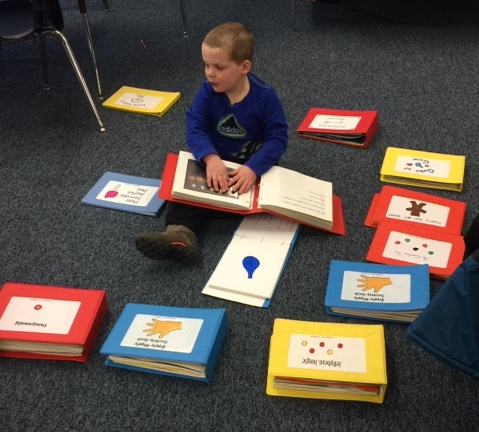
Rules and Guidelines for UEB
 Each of the ICEB member nations has a braille authority, which governs the transition, as well as the rules and guidelines in their region or country.
Each of the ICEB member nations has a braille authority, which governs the transition, as well as the rules and guidelines in their region or country.
International Council on English Braille (ICEB): Unified English Braille (UEB)
The member nations include:
- Australian Braille Authority
- The Braille Authority of New Zealand Aotearoa Trust (BANZAT)
- Braille Authority of North America (BANA)
- National Braille Council of Nigeria
- South Africa
- United Kingdom Association for Accessible Formats (UKAAF)
Overview of the rules and changes in UEB:
- The Rules of UEB, edited by Christine Simpson and published by International Council on English Braille (2013)
- ABCs of UEB (BANA)
- Hitchhiker’s Guide to UEB (New Zealand)
Charts, Cheat Sheets and Tools for Remembering Changes in UEB
- UEB Chart (Aroga)
- Duxbury UEB Chart
- Overview of Changes from EBAE to UEB (from BANA)
- UEB Quick Reference Sheet
- UEB Ain’t Hard To Do. Click here to listen to NYC TVI Mark Brady singing!
- UEB Symbols and Indicators
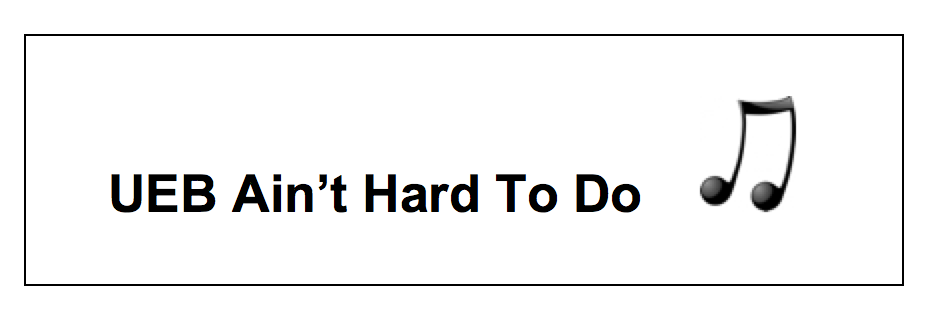
Resources for Learning UEB
There are different reasons for wanting to learning UEB, and different types of students. The resources listed here are for those who are already proficient in EBAE (English Braille American Edition), for transcribers, and for school-age students using braille.
Online Classes for Adults
- UEB Training (Wisconsin Center for the Blind and Visually Impaired)
- UEB Online Free online course for sighted adults from the Royal Institute for Deaf and Blind Children (RIDBC) in Australia.
- Unified English Braille Australian Training Manual (2014)
- RNIB Certificate in Contracted Braille (UEB)
Online Classes for Braille Transcribers
- Literary Braille Transcribing (National Federation of the Blind)
- Transcribers UEB Course (CNIB)
Teaching Braille Students to Make the Transition from EBAE to UEB
 UEB Curriculum for Braille Students is a series of ten lessons to teach students who are braille readers to make the transition to UEB. All lessons are by Catherine Summ and Suzanne Cappiello, who both work as Education Consultants for the Department of Rehabilitative Services (DORS-BESB) in CT. Lessons include:
UEB Curriculum for Braille Students is a series of ten lessons to teach students who are braille readers to make the transition to UEB. All lessons are by Catherine Summ and Suzanne Cappiello, who both work as Education Consultants for the Department of Rehabilitative Services (DORS-BESB) in CT. Lessons include:
- UEB Lesson 1: Eliminated EBAE Part Word Contractions No Longer Used in UEB
- UEB Lesson 2: Eliminated EBAE Part Word Contractions No longer Used in UEB
- UEB Lesson 3: New Spacing in UEB
- UEB Lesson 4: Typeform Indicators Used in UEB
- UEB Lesson 5: Punctuation Used in UEB
- UEB Lesson 6: Miscellaneous Symbols
- UEB Lesson 7: Period, Decimal and Dot Used in UEB
- UEB Lesson 8: Capitalization Used in UEB
- UEB Lesson 9: Grade 1 Symbol Indicator used in UEB
- UEB Lesson 10: Computer Notation used in UEB
BRL2 Publishing: Braille Literacy Materials for Teachers of the Visually Impaired
UEB Too is a program designed to teach UEB to students. It can either be used in conjunction with the original Braille Too curriculum for students learning braille with Braille Too, or used as a stand-alone program with students who are already competent readers in EBAE. It is on a USB drive that includes both the print for teachers and the braille (in Duxbury) for students, allowing individual teachers to make multiple copies if they need them (although copyright restrictions require each teacher to have their own USB drive). The cost is $60 plus shipping.
Video: Unified English Braille: An Introduction
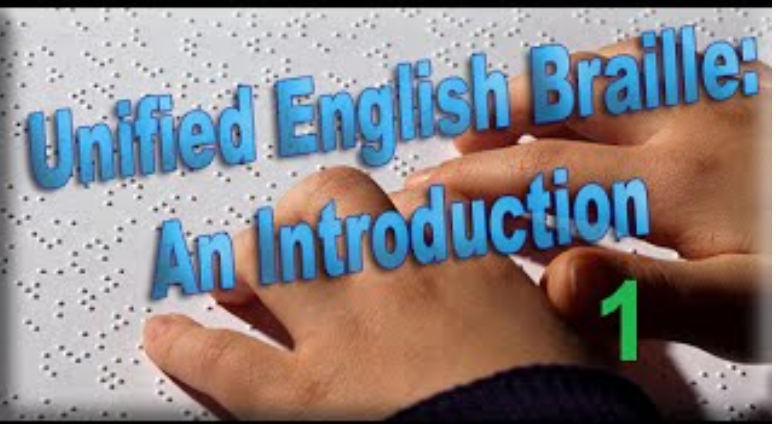
Introduction to Unified English Braille is a six-part video series from Wisconsin Center for the Blind and Visually Impaired that provides an overview of the changes that come with the transition to Unified English Braille.


